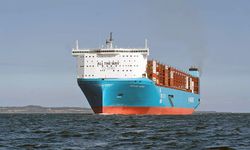The single sail on board the 89m-long Na Pae E Hiro is expected to reduce fuel consumption by 10%.
The eSAIL, designed for both new and existing vessels, works on the basis of suction sail technology. This generates up to seven times more lift than a conventional aeroplane wing and in shipping terms, equates to forward thrust.
The vessel will be built at Armon Shipyard in Vigo, Spain. Designed by Spanish consultancy, Cotenaval, for owner SNA Tuha’a Pae, the ship will have a range of eco-friendly features including engines that can run on biofuel or e-fuel, electric pod propulsion, and advanced waste treatment systems.
bound4blue co-founder and chief technology officer, David Ferrer, said: “This is stand-out contract for bound4blue, marking the first time our technology has been chosen for a newbuild … the eSAIL effectively provides a modern twist to the ancient tradition of harnessing the trade winds of the South Pacific. It allows this forward-thinking owner to achieve strong environmental and commercial benefits, taking advantage of an abundant renewable energy source to support a move away from fossil fuels.”
This latest deal follows several other recent contracts. They include two separate eSAIL installations for Louis Dreyfus Company. Four 26-metre sails are to be installed on the chartered vessel, Atlantic Orchard, a ten-year-old juice carrier, and three 22-metre sails will be retrofitted on the Ville de Bordeaux, a roro used by Airbus to ship aircraft subassemblies.
bound4blue also announced its first tanker contract recently with Bergen-based Odfjell Tankers. Later this year, four eSAILs will be installed on board the 49,042 dwt chemical tanker, Bow Orion, to coincide with her first special survey.






